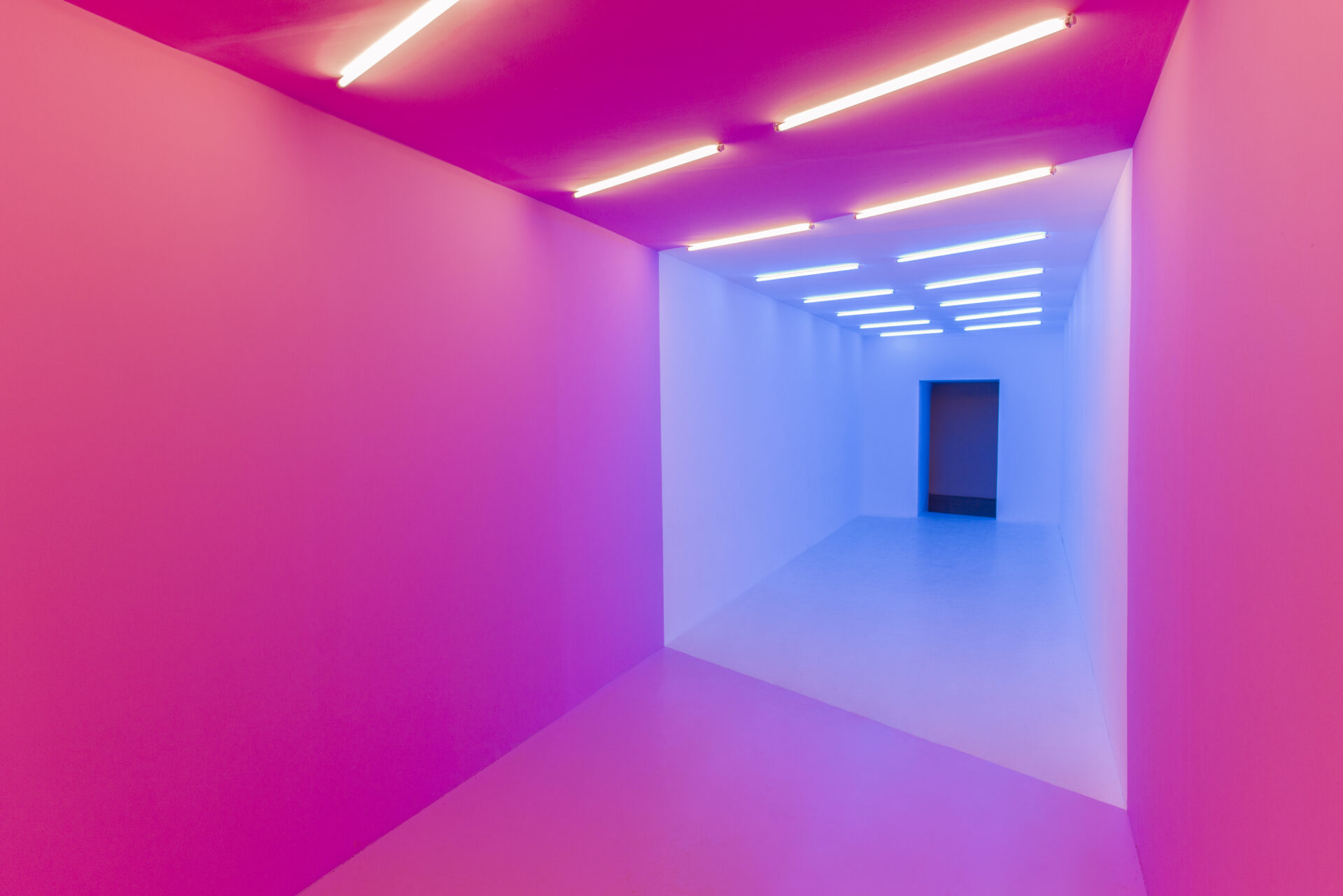
Kapwani Kiwanga
Complex and sensitive, Kapwani Kiwanga’s work constantly affects us through feelings of confusion. This affecting is not so much a method, but a path. through videos, sounds, performances, and installations, as well as through deep study, her art firstly confounds the rigid foundations of the modern-colonial world, especially its perversebinary logic. By shaking the binary rigidity of these structures, such as truth/fiction, for example, Kiwanga activates not only a fertile work of destitution as decolonization, but, above all, invites us to imagine ways that are radically other of conceiving and involving ourselves – to recall Denise Ferreira da Silva – with the World we are.a world of intermingling, crossing and confusion.
For the 35th Bienal, Kiwanga presents pink-blue (2017), born out of her research into total institutions – such as prisons and psychiatric institutions – and the impact of punitive design and architecture, and constant vigilance, on our carcasses. The installation brings to light the mechanisms that silently shape, regulate and predict modes of sociability. The color pink, especially Baker-Miller Pink, is used to calm aggressive instincts
(rehabilitation or policy of control?), while blue (neon) makes it difficultto find veins, inhibiting intravenous drug users (damage prevention or increasing risks?).
In this work and its outcomes, we can also walk this path of confusion, imagination, and implication, through the battle against colonial time that exists in it, characterized by a rigid linearity between past, present, and future, and giving way to a technical complexity that is no longer Eurocentric, through arranging colors (blue-pink, white) and shapes (entrance-exit, rectilinear- diagonal) in a direction opposite to that used to containand repress. Perhaps there, when we move towards escape routes, we can invent a new dance of time. If we let ourselves become lost in the pink-blue passage, confused between entrance and exit, we can still think of this installation as a huge, strange magnifying glass – geometric, diagonal, and colorful – through which we can glimpse (and be a part of ) a non-linear time, entering and inventing spaces nolonger commanded by the logic of colonial captivity.
abigail campos leal
translated from Portuguese by philip somervell and georgia fleury reynolds
Kapwani Kiwanga (Hamilton, Ontario, Canada, 1978) articulates a variety of materials and media in her works, including sculpture, installation, photography, video, and performance. She is the recipient of the Zurich Art Prize (2012) and the Marcel Duchamp Prize (2020). Her solo exhibitions have been held at venues such as the New Museum (New York, USA), State of Concept Athens (Greece), Haus der Kunst (Munich, Germany), Kunsthaus Pasquart (Biel, Switzerland), MIT List Visual Arts Center (Cambridge, MA, USA), Logan Center for the Arts (Chicago, IL, USA), and Jeu de Paume (Paris, France).

 Português
Português